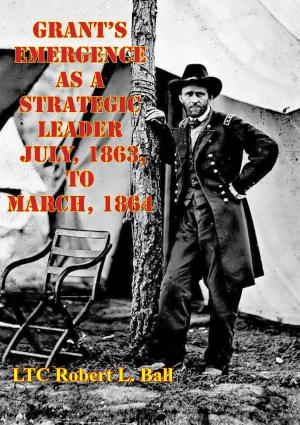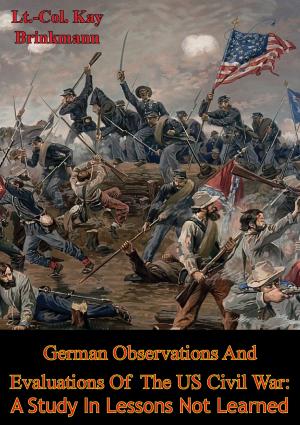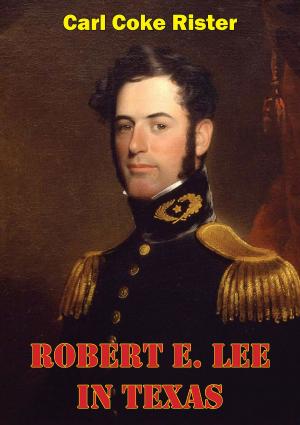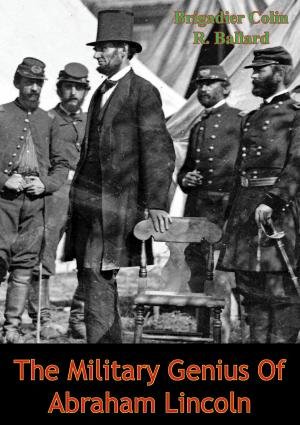The Civil War In The Western Theater 1862 [Illustrated Edition]
Nonfiction, History, Modern, 19th Century, Americas, United States, Civil War Period (1850-1877), Military| Author: | Col. Charles R. Bowery Jr. | ISBN: | 9781786254337 |
| Publisher: | Golden Springs Publishing | Publication: | November 6, 2015 |
| Imprint: | Golden Springs Publishing | Language: | English |
| Author: | Col. Charles R. Bowery Jr. |
| ISBN: | 9781786254337 |
| Publisher: | Golden Springs Publishing |
| Publication: | November 6, 2015 |
| Imprint: | Golden Springs Publishing |
| Language: | English |
Includes 8 maps and numerous other illustrations
The Mississippi River had figured prominently in the North’s strategic planning from the outset of the war. In May 1861, then-General in Chief of the U.S. Army Winfield Scott had drafted the so-called Anaconda Plan. Scott had proposed that the Federal armed forces squeeze the life out of the Confederacy by blockading the Southern coastline and launching an amphibious thrust down the Mississippi. He had argued that his plan would end the war with minimal bloodshed, conveniently ignoring the fact that it would take years for the North to build a sufficient navy. President Abraham Lincoln thought the Anaconda Plan had merit, but he knew that the Army would have to play a far more active role than Scott had envisioned—especially in Kentucky and Missouri—where Unionist and secessionist forces were already maneuvering for power.
Lincoln was determined not only to keep the two crucial border states in the Union, but to rescue eastern Tennessee. One senator, Andrew Johnson, and one congressman, Horace Maynard, from that region remained in Washington to represent their Unionist supporters.
On 4 August, Maj. Gen. George B. McClellan, the Army of the Potomac’s new commander, presented his own strategic plan for the West that accorded with Lincoln’s wishes yet proved more elaborate. He recommended a grand campaign involving two western armies—one based in Kentucky and the other in Missouri. The first army would divide into two columns in order to capture eastern Tennessee and Nashville. They would reunite at Chattanooga and proceed to Atlanta and then Montgomery, Alabama. After gaining control of Missouri, the second army would launch an amphibious expedition down the Mississippi River and seize New Orleans. All that remained was for the president to find generals willing and able to put these ambitious plans into action.
Includes 8 maps and numerous other illustrations
The Mississippi River had figured prominently in the North’s strategic planning from the outset of the war. In May 1861, then-General in Chief of the U.S. Army Winfield Scott had drafted the so-called Anaconda Plan. Scott had proposed that the Federal armed forces squeeze the life out of the Confederacy by blockading the Southern coastline and launching an amphibious thrust down the Mississippi. He had argued that his plan would end the war with minimal bloodshed, conveniently ignoring the fact that it would take years for the North to build a sufficient navy. President Abraham Lincoln thought the Anaconda Plan had merit, but he knew that the Army would have to play a far more active role than Scott had envisioned—especially in Kentucky and Missouri—where Unionist and secessionist forces were already maneuvering for power.
Lincoln was determined not only to keep the two crucial border states in the Union, but to rescue eastern Tennessee. One senator, Andrew Johnson, and one congressman, Horace Maynard, from that region remained in Washington to represent their Unionist supporters.
On 4 August, Maj. Gen. George B. McClellan, the Army of the Potomac’s new commander, presented his own strategic plan for the West that accorded with Lincoln’s wishes yet proved more elaborate. He recommended a grand campaign involving two western armies—one based in Kentucky and the other in Missouri. The first army would divide into two columns in order to capture eastern Tennessee and Nashville. They would reunite at Chattanooga and proceed to Atlanta and then Montgomery, Alabama. After gaining control of Missouri, the second army would launch an amphibious expedition down the Mississippi River and seize New Orleans. All that remained was for the president to find generals willing and able to put these ambitious plans into action.
![Cover of the book The Civil War In The Western Theater 1862 [Illustrated Edition] by Col. Charles R. Bowery Jr., Golden Springs Publishing](https://www.kuoky.com/images/2015/november/500x500/9781786254337-ymNQ_500x.jpg)


![Cover of the book Reminiscences Of The Civil War [Illustrated Edition] by Col. Charles R. Bowery Jr.](https://www.kuoky.com/images/2015/november/300x300/9781786251824-T47w_300x.jpg)







![Cover of the book Front Rank [Illustrated Edition] by Col. Charles R. Bowery Jr.](https://www.kuoky.com/images/2015/november/300x300/9781786251268-PLy3_300x.jpg)



![Cover of the book Artillery Employment At The Battle Of Gettysburg [Illustrated Edition] by Col. Charles R. Bowery Jr.](https://www.kuoky.com/images/2014/august/300x300/9781782893943-pbeA_300x.jpg)